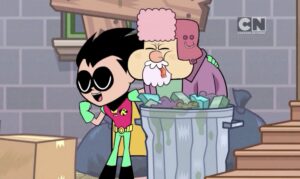
Using media to teach is a popular option for economics instructors trying to move away from “chalk and talk” (Becker and Watts, 2008). Examples run the gamut from television shows like Seinfeld (Ghent, Grant, and Lesica, 2011), The Big Bang Theory (Teirney, et al., 2016) and The Office (Kuester, Mateer, and Youderian, 2014), to movies (Rousu, Smith and Hackenberry, 2022), music Ben-Abdesslem, 2022, Geerling, et al, 2023, Jaeger and Wooten, 2023), and Broadway (Rousu, 2016).
Teaching with comics generally, and superheroes in particular has a great advantage over other media. Superheroes are ubiquitous and as such, almost every student will know who the characters are. This is true across genders, racial groups, and ethnicities (O’Roark, 2017). Comicnomics provides many video clips and comic panels with economic explanations. These clips can be shown as an introduction to a lesson to prime the class, or to wrap-up a lesson and reinforce the idea that economic concepts appear in unexpected places. However, teaching goes beyond just showing clips.
Using media to successfully teach economics requires some structure so that the message of economics doesn’t get lost in the exuberance of the media. Any of the media presented on this website can be utilized in class in a general way. Wooten and Geerling (2023) offer some broad approaches to using media in the classroom. They suggest that media can be tied to response systems such as clickers or Kahoots (Wooten, Acchiardo and Mateer, 2020), think-pair-share exercises, or discussion board prompts. They also refer those looking for other assessment tools to The Handbook for Economic Lecturers, (in particular, the chapter by Pezzino, (2017) deals with using media in the classroom) and the Science Education Resource Center (SERC) at Carleton College which has a dedicated section on using media to enhance teaching and learning.
Some media, however, lend themselves to more developed lesson plans. Below are a variety of teaching applications that make concepts come alive in the classroom. Each lesson plan provides a list of materials you might need, links to relevant excel sheets or documentation, descriptions of activities you may want to conduct, as well as discussion and follow up questions to reinforce the economic lesson.
If you prefer to use a clip and follow up with questions, the final item on this list is a link to pre-made Kahoots! You will need a Kahoot account to access these, but they are ready for your use.





